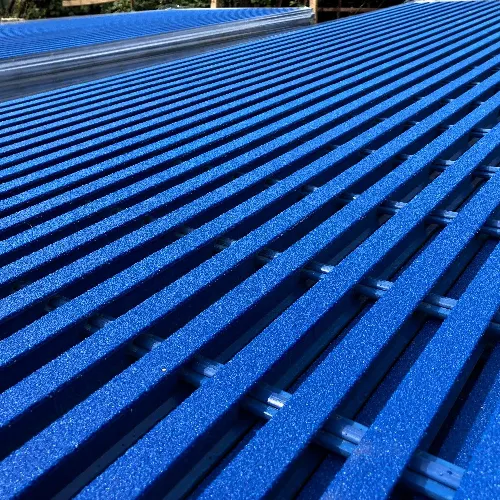loading...
- No. 9, Xingyuan South Street, Dongwaihuan Road, Zaoqiang County, Hengshui, Hebei, China
- admin@zjcomposites.com
- +86 15097380338
- Welcome to visit our website!
sectional water storage tank
Sectional Water Storage Tanks A Comprehensive Overview
Sectional water storage tanks have gained popularity in recent years due to their versatile applications and efficient design. These tanks, composed of several interconnected sections, provide an excellent solution for various water storage needs—ranging from residential systems to large-scale industrial applications. In this article, we will explore the features, benefits, installation considerations, and maintenance of sectional water storage tanks.
Features of Sectional Water Storage Tanks
One of the primary features of sectional water storage tanks is their modular design. These tanks are constructed from multiple panels, enabling them to be assembled on-site to form a desired size and shape. Typically made from materials such as fiberglass, steel, or reinforced plastic, sectional tanks can easily adapt to the specific requirements of different environments. The modular approach allows for customization in terms of dimensions and capacity, making them suitable for both small residential properties and extensive agricultural or industrial facilities.
Additionally, sectional tanks are designed with user-friendly access points, making maintenance and monitoring more straightforward. Many models also incorporate insulation and protective coatings, which enhance durability and efficiency, particularly in areas with extreme weather conditions. This feature extends the lifespan of the tank and helps to maintain the quality of the stored water.
Benefits of Sectional Water Storage Tanks
The benefits of using sectional water storage tanks are numerous. First and foremost, their adjustable capacity allows users to scale the storage solution up or down based on their changing water needs. This flexibility makes them an excellent choice for communities experiencing seasonal fluctuations in water demand.
Cost efficiency is another significant advantage. Sectional tanks often require a lower initial investment compared to traditional fixed tanks. Their ease of transportation and assembly further reduces setup costs, especially for larger structures designed for industrial applications. Moreover, the ability to expand the tank without significant structural changes allows businesses to align their water storage systems with their growth trajectories.
Another critical benefit is the enhanced accessibility that sectional tanks provide for maintenance and inspections. Easy access to different compartments ensures that potential issues can be identified and resolved quickly, thus promoting a more effective water management strategy.
sectional water storage tank

Installation Considerations
While sectional water storage tanks offer numerous advantages, there are several considerations to keep in mind during installation. Proper site selection is crucial; the location should be easily accessible for construction, maintenance, and potential transportation of water. Additionally, the ground must be stable and capable of supporting the tank’s weight when filled.
It is also important to follow building codes and regulations specific to water storage systems. These codes often dictate installation standards, materials, and safety measures to protect public health and ensure system reliability. Engaging a qualified professional for the installation process is advisable to navigate these complexities effectively.
Maintenance of Sectional Water Storage Tanks
After installation, regular maintenance is vital to ensure the operational efficiency and longevity of sectional water storage tanks. Routine inspections should be conducted to check for any signs of wear and tear, leaks, or sediment buildup. Cleaning the tank periodically will help maintain water quality and prevent contamination.
Water levels should also be monitored to prevent overflow or run dry scenarios, as both conditions can lead to operational issues. Additionally, the tank's components—including seals, valves, and pumps—should be serviced in accordance with the manufacturer’s guidelines to avoid mechanical failures.
Conclusion
In summary, sectional water storage tanks offer an adaptable and cost-efficient solution for diverse water storage needs. Their modular design, ease of maintenance, and flexibility make them an excellent choice for both residential and industrial applications. By understanding their features, benefits, installation considerations, and maintenance requirements, users can make informed decisions and effectively leverage the advantages of sectional water storage tanks for their specific needs. Whether for irrigation, firefighting, or domestic use, these tanks play a crucial role in modern water management strategies.
-
GRP Structures: The Future of Lightweight, High-Performance EngineeringNewsJun.20,2025
-
FRP Water Tank: High-Performance Storage for Corrosive and Clean Water SystemsNewsJun.20,2025
-
FRP Square Tube: The New Industry Standard for Chemical and Structural ApplicationsNewsJun.20,2025
-
FRP Pultruded Profiles: The Ultimate Choice for Lightweight Structural StrengthNewsJun.20,2025
-
FRP Handrails: The Safer, Smarter, and Stronger Choice for Modern InfrastructureNewsJun.20,2025
-
FRP Grating: The Smart Solution for Durable, Lightweight Industrial FlooringNewsJun.20,2025
-
Why Choose a Galvanized Water Tank for Your Storage NeedsNewsMay.21,2025
